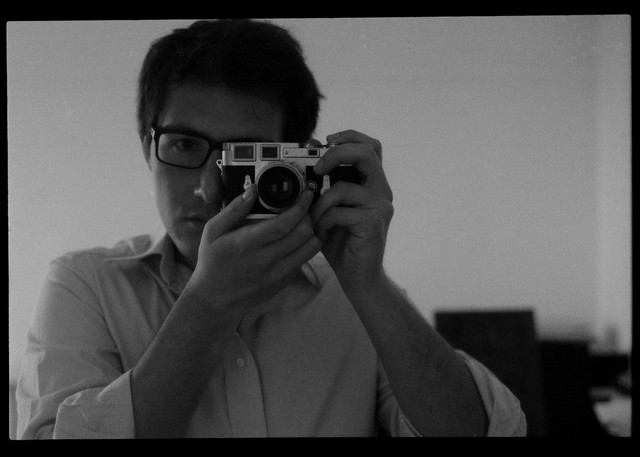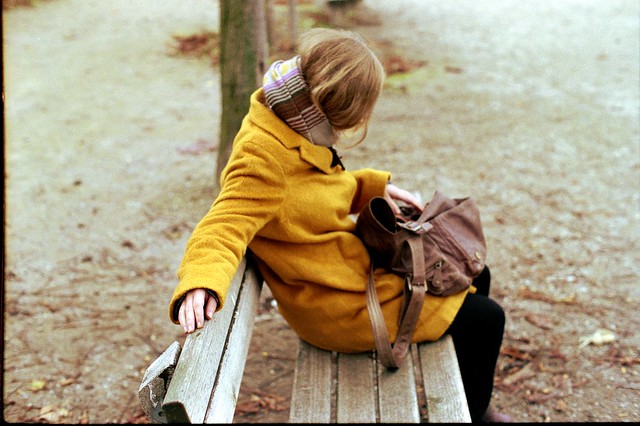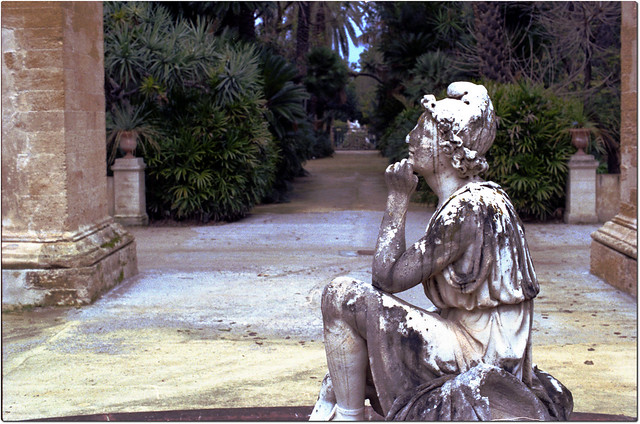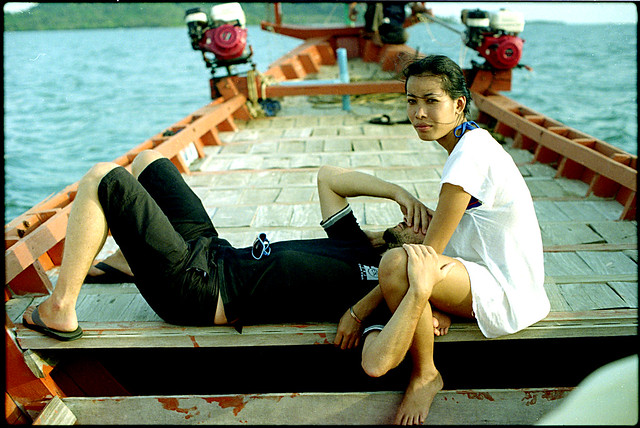Note: This is a guest post by Emanuele Faja from AndBeThere.com
You can connect to AndBeThere via:
Facebook | Google+ | Twitter | Our Website | Flickr | Via Email
I would like to thank Patrick Leong for inviting me to contribute to FindingRange.com
 |
| Me being a Hypocrite with my Leica M3 |
I am writing this post because I am getting a feeling that photography is becoming more and more about the gear, and less and less about the photographs. I’m sure you know what I’m talking about…
Don’t get me wrong, it’s quite amazing when new cameras come out with never-before-seen features, and they blow everybody’s mind but that’s not really what photography is about, is it?
The first thing you need to do, is look through the viewfinder. If your camera doesn’t have a viewfinder, go and buy a new camera 😉
Looking through the viewfinder and then squeezing the shutter release button at the perfect moment is the only thing you should really be thinking about. Lenses, cameras, sensors, film, tripods, filters, lens hoods, flashes and all the rest are a distant second.
No amount of gear will make you take better pictures. The only way to improve your photography is to improve yourself as a human being. Develop your imagination, look at images from the masters, read, and most importantly, get out there and shoot!
But whatever you do, don’t just shoot…Think!
Think about your composition.
Think about the quality of the light.
Think about your timing.
Think about what you want to convey to the viewer.
These issues are far more important than the fact that you are using the latest in digital camera technology or a 60 year old film camera.
Composition
Composition is quite a tough nut to crack. Yes, the basics are splattered throughout the internet: The Golden Ratio, the Rule of Thirds, the use of perspective and using lines to lead the eye.
As a composer, I approach composition from a completely different point of view. I don’t have anybody standing next to me at the piano telling me what I can and cannot write. I have total control. Of course, with this total control also comes responsibility. I need to be aware of the boundaries of good taste [contrary to popular belief, good taste is not subjective, but that’s a whole other article!] and also of coherence, logic and unity.
All of these intermingle into a big melting pot and each one of them takes priority at different times. If I am writing a über-modern piece of piano music then I can probably get away with breaking or bending the rules of harmony and logic as long as my final result has some form of coherence and unity. I couldn’t get away with doing that if I was writing a imitation Baroque piece.
Note very careful that I’ve left out the word “art” in this discussion because that’s a whole other can of worms…
Anyway, I think it’s quite clear how this approach can be translated for photography. You don’t need to follow all or even any of the rules for composition, but make sure that you say something, and you say it loud and clear! When I am out shooting I sometimes like to imagine that I am a painter, and I try and imagine what the perfect painted scene, in which I have full control, would look like. I then try and get as close as possible with all the limitations that the real world puts in the way.
Btw, the word photography derives from the Greek φωτός (phōtos) “light” and γραφή (graphé) “drawing”,[5] together meaning “drawing with light”.
That’s not a coincidence!
Quality of Light

Due to the fact that we are “drawing with light”, the quality of the light that we capture is perhaps the single most important factor in a good photograph. Or maybe not. I haven’t made my mind up on this point!
Generally speaking, the quality of light for photography is better during the early morning and the late afternoon when the sun is not so relatively high in the sky. During the middle of the day the shadows can be very harsh, and everything can look “flat”. Of course, for some projects this may very well be desired!
In my opinion, using a non-metered fully manual film cameras helps you become a better photographer regardless whether you shoot digital or film.
When you shoot a non-metered fully manual film camera, you are forced to really consider the quality and intensity of the light at any given moment. This sounds hard, but before you know it, it’s an automatic process.
At first you are constantly wondering about the time of day, the location of the sun, the shadows, trying to recalculate the Sunny 16 rule for different apertures and it feels like it’s just a pain in the ass and you can’t concentrate on taking photographs. Soon enough, you find yourself learning from your mistakes and recognising similar situations and you are pre-setting your camera long before you raise it to your eye to take the shot. This allows you to completely stop worrying about your gear and let your imagination roam free! I can’t even begin to describe to you how much your photography will improve if you do this.
Needless to say, this can be done with the latest digital equipment, but I feel it’s much easier to stick to the learning path with an old fashioned film camera. 🙂
Timing
 |
| Luckily I managed to find an even bigger Hypocrite! |
Timing is everything. Consequently, fast reactions are very important. Being able to spot the “decisive moment” before it actually happens is a superb skill to develop. If you get good at this, it also means you can afford to have slower reactions because you have time to get ready!
Let me tell you how I sometimes go about trying to capture the decisive moment. I find a subject which “speaks” to me, and I look around to see if there is anything/anyone else nearby that can reinforce that message. Let me give you an example:
In Palermo (Sicily, not Argentina!) the main boulevard, called Via Liberta is shut to traffic on Sundays. This makes it really great to walk right through the city and everybody takes advantage of it. Everybody is out with their friends or their family.
I saw an old man sitting on a bench looking quite lonely, and I saw that a family was going to be walking past him in the next twenty seconds or so. My camera was already set for both the exposure and the focus, all I had to do was point and click. In my mind I pictured the family walking past the bench and then I would take my shot. My idea was to highlight his loneliness by juxtapositioning the family into the frame. Here is an aerial view of how the scene could have turned out:
 |
| My apologies, I am famous for my awful sketches… |
In the end, the shot didn’t work out as other people ended up walking into the frame and, unfortunately, I didn’t have the time to hang about.
If you are constantly analysing your surroundings in this way, you will start to capture the decisive moments in your local surroundings. It doesn’t matter if half of the time (or more!) the decisive moment doesn’t come together because the times that it does will more than make up for it.
Meaning
 |
| Missing Someone… |
As I said earlier, whatever you do, don’t just shoot. Think. Think about what you want to say. Of course, not every single shot has to be “deep” and full of meaning. You might see something amusing or slightly unusual, which doesn’t carry much meaning, that doesn’t mean you shouldn’t photograph it!
I wouldn’t get too hung up on trying to convey a specific meaning in one or more photographs. I think this comes more from having a generally relaxed attitude while keeping a theme in the back of your head.
There is much more that needs to be said, and I’m not the right person to say it.
I strongly recommend you read the Art of Lying by Oscar Wilde.
Bonus Section: Why Shoot Leica?
 |
| Leica M3 with Dual Range 50mm Summicron f/2 and LeicaMeter. Photographed by Brian Johnson |
It might seem a tad absurd after everything that I’ve written here to conclude with a section recommending perhaps one of the most expensive and luxurious camera brands in the world.
..Perhaps it is!
The reasons I do recommend shooting Leica is threefold:
- Simplicity
Shutter Speed, Aperture, and Iso. Those are the three things you need to control and that’s all you get with a Leica M rangefinder camera. The Leica M Type 240 adds all kinds of extra that we don’t need but, of course, you should be shooting film! 😉
- The Rangefinder Advantage
This is not exclusive to Leica but shooting with a rangefinder is amazing because you can see the exact moment you take your shot, unlike (D)SLR cameras which black out during the crucial split-second because they have to get the mirror out of the way. As far as rangefinder cameras go, Leica’s are the best.
- The Build Quality
Leica’s are legendary for their build quality and quite rightly so. Let me, modestly, quote myself:
“Build quality is a tough one to pin down. Everybody talks about it, Leica is famous for it but most people could not give you a clear concise definition. Build quality is the overall quality of the construction, design and execution of a product. This can include factors such as finish, reliability, the use of premium materials and feel. The last factor in particular is very subjective but I can tell you that the Leica M3 does “feel” special. When you hold it in your hand it screams quality. It’s a REAL™ camera. Unsurprisingly, REAL™ cameras are made from metal. REAL™ cameras are not light and they can take a beating, as well as give one. REAL™ cameras have interchangeable lenses and full manual controls. No hand holding here. REAL™ cameras don’t need a light-meter because real cameras are shot by real photographers who can use their eyes to guess know the exposure. Occasionally, REAL™ cameras do have a light-meter but the real photographers take the battery out and donate it to charity. An example of such a REAL™ camera is the Pentax K1000. The Leica M3 is a REAL™ camera. It’s made out of metal, weighs a fair bit and is fully manual. If you attach a Leica 50mm Summicron lens, you have, in my opinion, the finest photographic kit available to mankind. You will be using it for the rest of your life.“
While I was talking specifically about the Leica M3, this could be said about any Leica M camera.
Anyway, enough from me!
Remember to have fun and another shout out to Patrick for giving me the opportunity to contribute to his wonderful blog.
From the Admin: I’d really like to thank Emanuele Faja for writing this guest post, which btw, is the first guest post on FindingRange. I found it really interesting to read, and hope he contributes more in the future! I urge all of you to go check out his site, andbethere.com, especially if you like film! Thanks again, Emanuele!



Nice post, Emanuele!
Thanks Patrick, it was a pleasure to contribute to your blog.
Ah film! I remember it well. Your aesthetic musings must resonate powerfully with every serious photographer. Permit me to go a step further: camera plus film plus DARKROOM. Looking forward to more guest posts on FindingRange.
Ah yes, unfortunately that’s the one step that I, for various reasons, don’t do myself. I think having a lab with a 27 minute turnaround for c41 and 1 hour turnaround for BW makes me very lazy indeed!
Glad you enjoyed the article 🙂